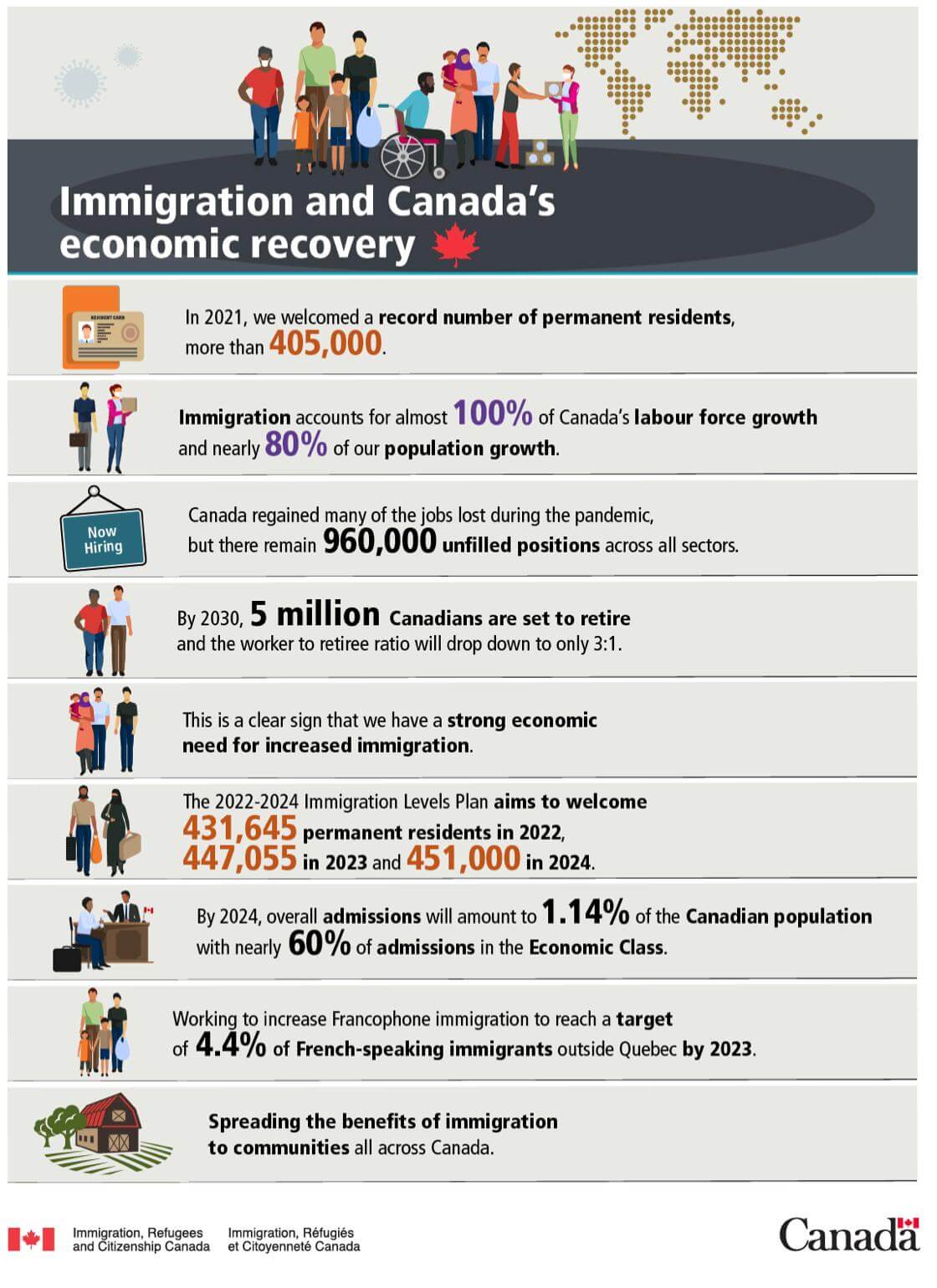
Immigration Canada rings in 2023 by making history
Canada’s immigration department is giving itself a pat on the back today by announcing it has achieved its target of welcoming 431,645 new permanent residents to the country in 2022, about 30,000 more than the previous year.
“Canada has experienced one of the fastest recoveries from the pandemic, thanks in large part to our approach to immigration,” said Immigration, Refugees and Citizenship Canada (IRCC) in a media statement to welcome the new year and highlight the historic milestone.
It was the largest number of people ever welcomed in a year in Canadian history, said IRCC, adding the last time Canada welcomed such a large number of newcomers was in 1913, when the government opened its doors widely to European settlers fleeing the imminent First World War.
In 2022, IRCC processed approximately 5.2 million applications for permanent residence, temporary residence, and citizenship. That’s double the number of applications processed in 2021.
“I am excited to see what the future holds and look forward to another historic year in 2023 as we continue to welcome and embrace newcomers with open arms,” said Sean Fraser, Minister of Immigration, Refugees and Citizenship.
Canada is currently struggling with a critical labour shortage — over one million vacancies — and a historical visa processing backlog with more than two million applications stuck in the pipeline. At the same time, Canada’s new Immigration Levels Plan aims to welcome 465,000 permanent residents in 2023; 485,000 in 2024; and 500,000 in 2025.
In a recent poll, the Environics Institute of Canada, in partnership with the Century Initiative, found that seven in 10 Canadians approve of immigration levels that allow more than 400,000 people into the country annually.
Over the past two years, Canada has been tweaking its immigration programs to attract skills and talents while trying to find ways to ease the visa processing backlogs plaguing its systems.
Changes include a 20 per cent increase in the number of applicants who can apply under the 2023 International Experience Canada (IEC) Program, or the working-holiday program.
Immigration Canada has also temporarily removed the 20-hour weekly work limit on study permits for international students as part of the effort to address widespread job vacancies across the economy.
As well, Canada has overhauled its Express Entry System to attract more economic migrants. Nurses aides, long-term care aides, hospital attendants, elementary and secondary school teacher assistants, and transport truck drivers are examples of some of the 16 occupations now included in Express Entry under the revised National Occupational Classification (NOC) 2021.
But immigration lawyers and refugee advocates say the government needs to fix the processing delays for the system to work and the numbers to be meaningful. The Canadian Immigration Lawyers Association (CILA) said that it has serious concerns about backlogs that are leaving millions in limbo across the world while impacting family reunification files for those whose relatives are already in Canada, and delaying job and student permits.
“Processing times for many types of applications remain far too long and this negatively impacts employers and foreign nationals significantly and also hampers family reunifications,” said Ravi Jain, principal at Jain Immigration Law and co-founder of CILA.
“We certainly recognize that there has been increases in certain ‘lines of business’ with record numbers of work permits and student visas being issued, for instance. However, this does not fully explain how a backlog of over two million cases was allowed to develop.”
Immigration to Canada by the numbers
- Immigration accounts for almost 100 per cent of Canada’s labour force growth.
- Roughly 75 per cent of Canada’s population growth comes from immigration, mostly in the economic category.
- By 2036, immigrants will represent up to 30 per cent of Canada’s population, compared with 20.7 per cent in 2011.
- During the 2021 Census, nearly 1 in 4 people counted were or had been a landed immigrant or permanent resident in Canada — the highest proportion since Confederation and the largest proportion among G7 countries.
- Just over 1.3 million new immigrants settled permanently in Canada from 2016 to 2021, the highest number of recent immigrants recorded in a Canadian census.
- Immigrants account for 36 per cent of physicians; 33 per cent of business owners with paid staff; and 41 per cent of engineers.
- The federal government has committed an additional $50 million in 2022-23 for IRCC to address ongoing application backlogs, improve processing times, and speed up the process for skilled newcomers to fill critical labour gaps.
Image Source: https://www.pexels.com/




